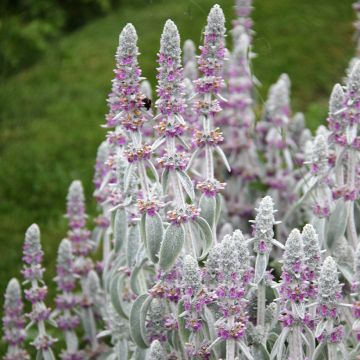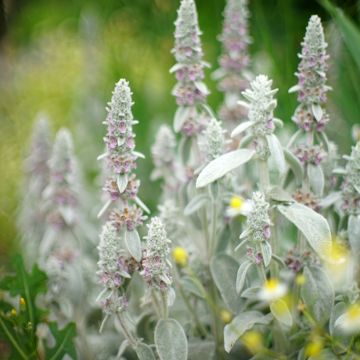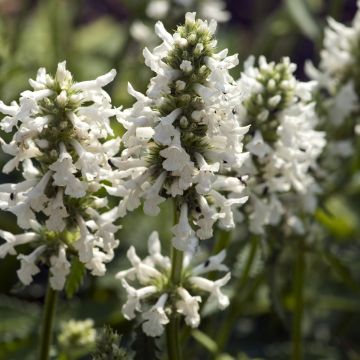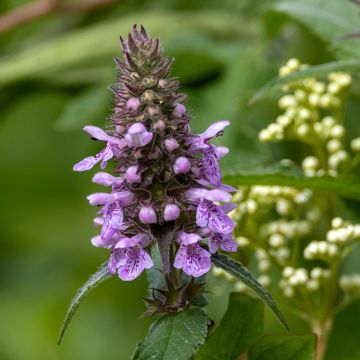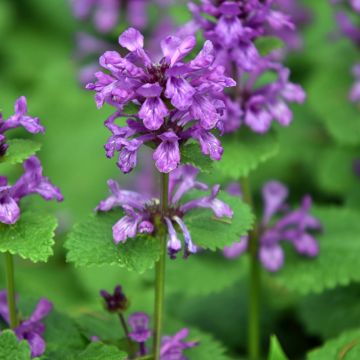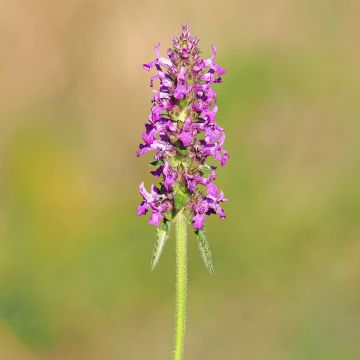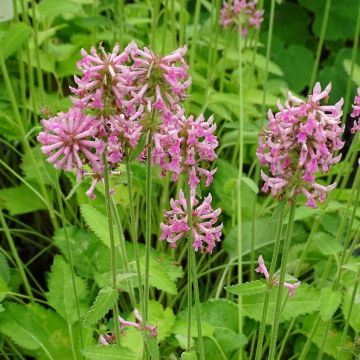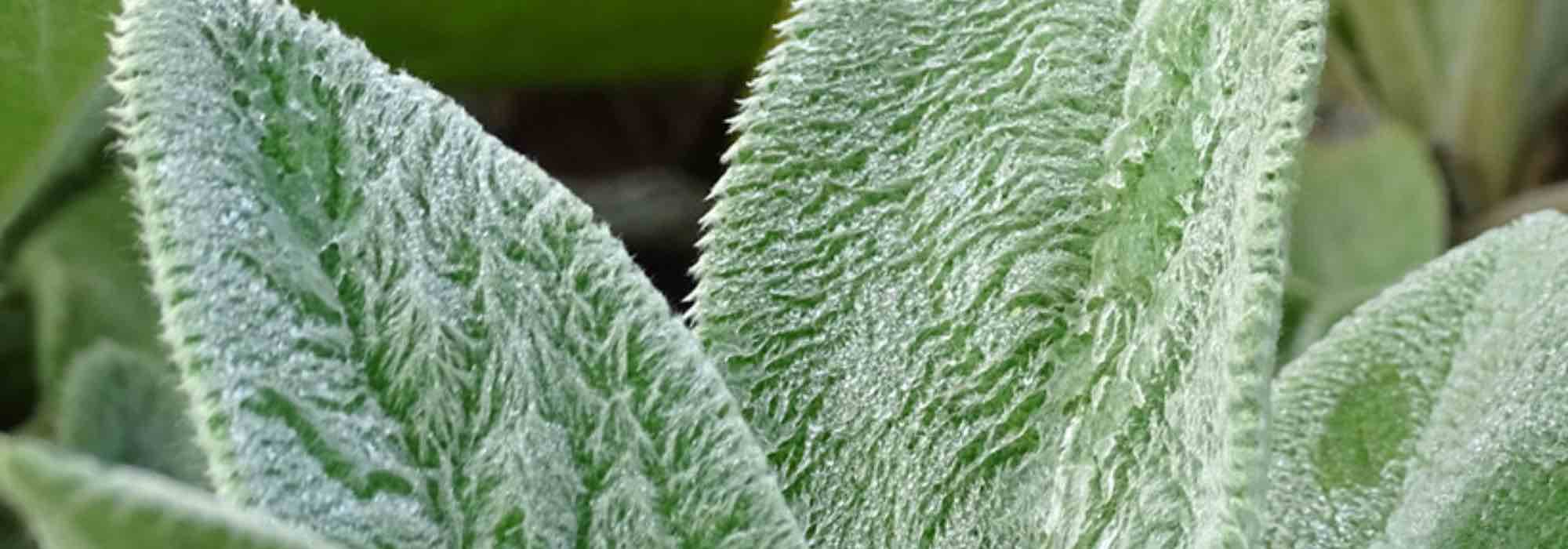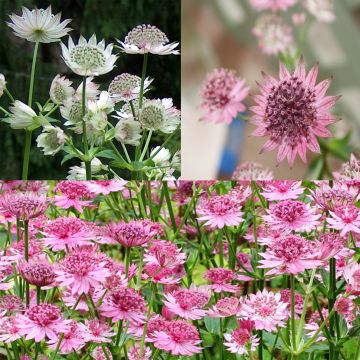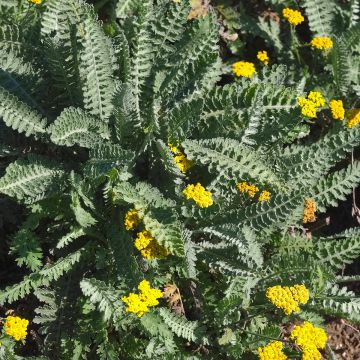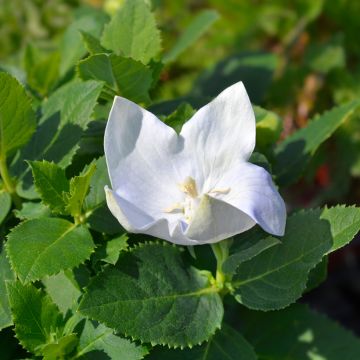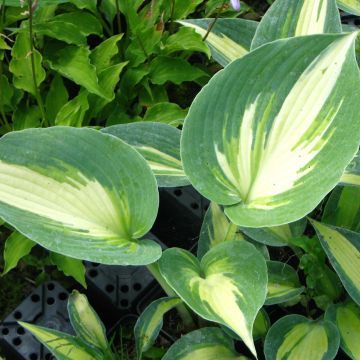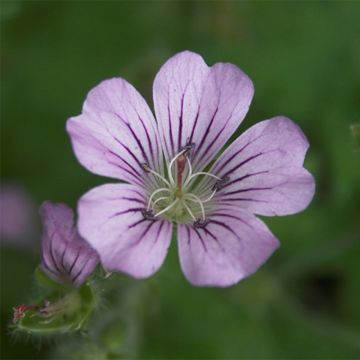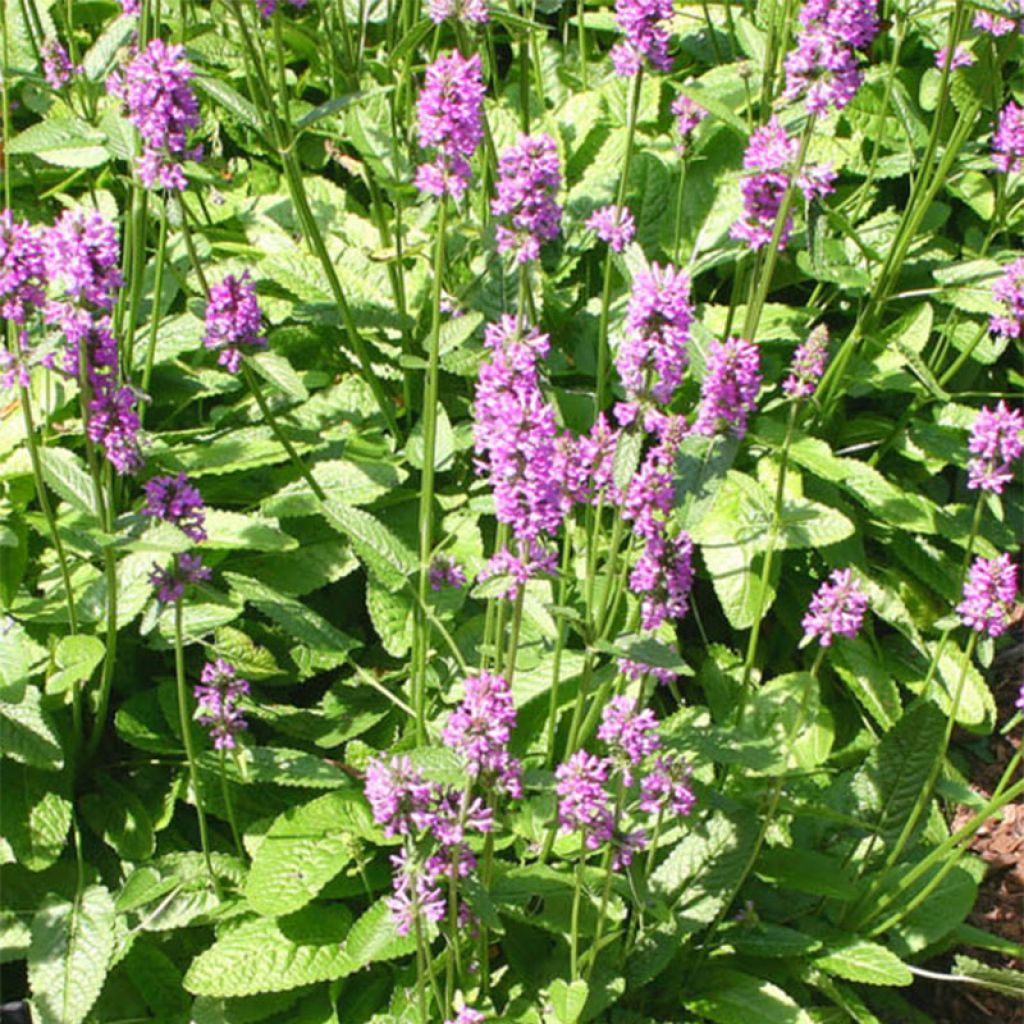

Stachys monieri Hummelo
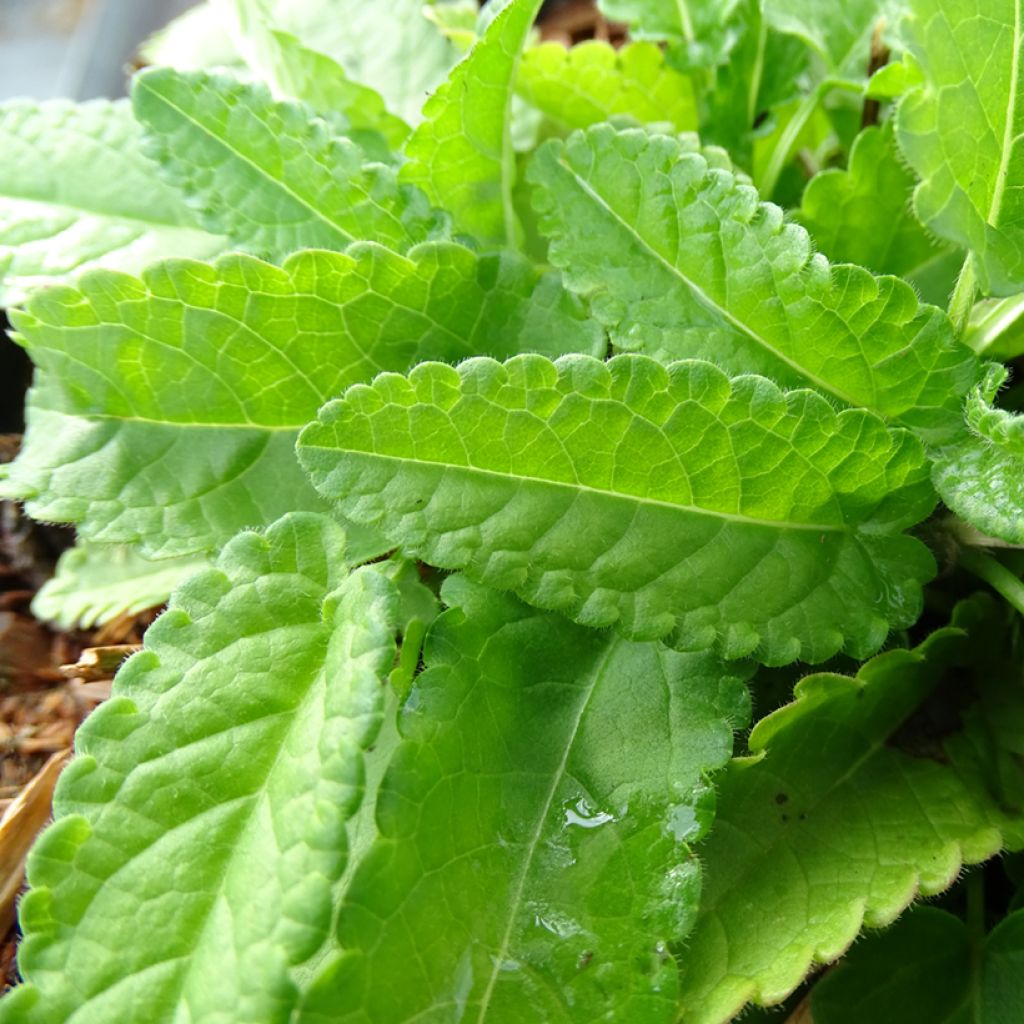

Stachys monieri Hummelo
Stachys monieri Hummelo
Stachys monieri Hummelo
Monier's Betony, Alpine Betony
Arrived safely with naked roots already showing forming shoots. Just need to plant and admire the future blooms ???? Thank you!
marthé , 24/04/2025
Special offer!
Receive a €20 voucher for any order over €90 (excluding delivery costs, credit notes, and plastic-free options)!
1- Add your favorite plants to your cart.
2- Once you have reached €90, confirm your order (you can even choose the delivery date!).
3- As soon as your order is shipped, you will receive an email containing your voucher code, valid for 3 months (90 days).
Your voucher is unique and can only be used once, for any order with a minimum value of €20, excluding delivery costs.
Can be combined with other current offers, non-divisible and non-refundable.
Home or relay delivery (depending on size and destination)
Schedule delivery date,
and select date in basket
This plant carries a 12 months recovery warranty
More information
We guarantee the quality of our plants for a full growing cycle, and will replace at our expense any plant that fails to recover under normal climatic and planting conditions.
Would this plant suit my garden?
Set up your Plantfit profile →
Description
Stachys monieri Hummelo is a mountain woundwort. It is a cousin of bear's ears but does not look like them. This perennial is seldom used in our gardens, but is doubly interesting: first, because of its rounded mound, formed by a very green clump, and secondly, for its highly ornamental summer flowering in long spikes of bright purple flowers. This Stachys retains its large, wavy, shiny leaves during mild winters. A pretty, hardy and original plant, easy to grow in a border, rockery or container, in ordinary well-drained but not too dry soil.
Stachys belong to the Lamiaceae family, just like mints and salvias. Stachys monieri originates from Kurdistan, a country of mountains and high plateaus in Central Asia. It is a herbaceous plant with creeping stems, of medium size, with variable appearance.
The 'Hummelo' variety distinguishes itself with a very beautiful, eye-catching violet flowers. The plant measures 40 to 50cm (16 to 20in) high when in flower, and forms a well-arranged mound of basal foliage. The large, ovate to heart-shaped, bottle-green leaves are shiny and strongly veined, with a wavy appearance. From June-July to September-October, it displays flowers grouped in wide and dense spikes at the top of stems adorned with the odd small leaf. The flowers are two-lipped, with a 1.5 cm (1in), vivid violet lobe. This plant slowly forms beautiful clumps, increasing through creeping stems that root upon contact with the ground.
Stachys monieri Hummelo will naturally find a place in borders, and rockeries with Onosma alboroseum, campanulate wall bellflower or Antennaria dioica Rubra. It pairs well in beds with the pink, mauve, or violet flowers of echinaceas, monardas, veronicas, Sedum Matrona, Coreopsis... It will thrive in wild-looking beds with comfrey, borage, centaureas, catmints, and asters (Aster cordifolius, Aster turbinellus...). It adapts to many situations, so you can plant it at the base of shrub roses or with perennial geraniums.
Stachys monieri Hummelo in pictures
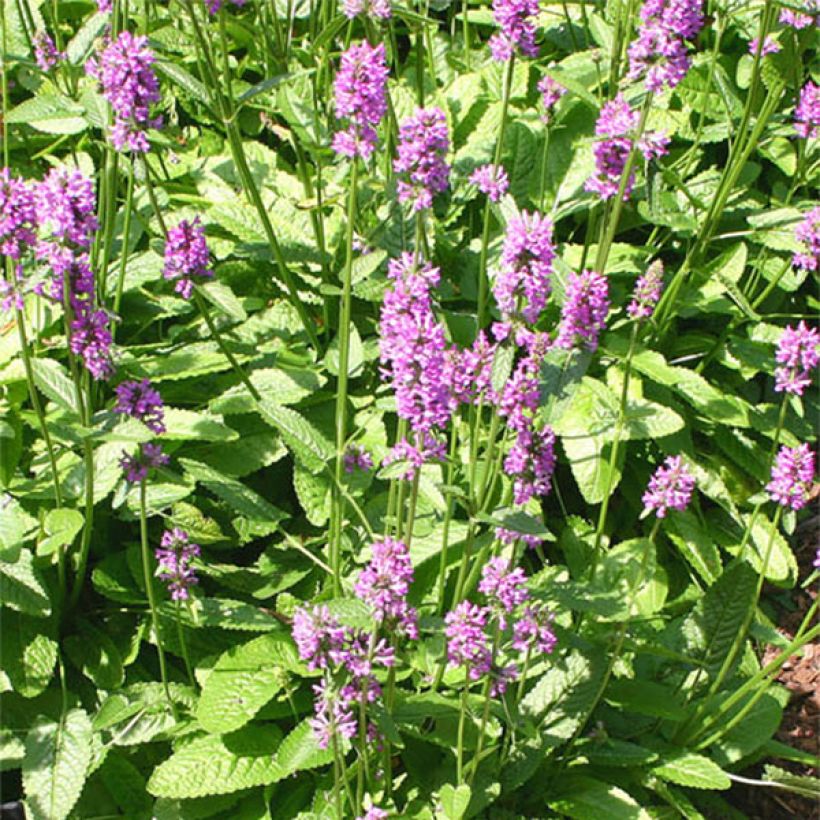

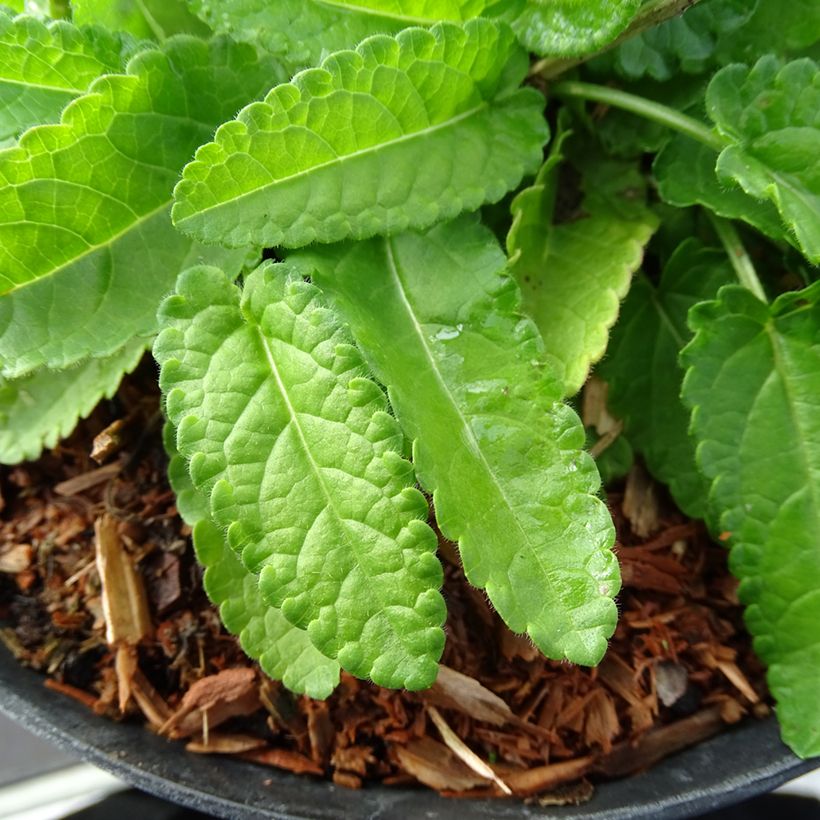

Flowering
Foliage
Plant habit
Botanical data
Stachys
monieri
Hummelo
Lamiaceae
Monier's Betony, Alpine Betony
Cultivar or hybrid
Other Stachys
View all →Planting and care
Stachys monieri is easy to grow and low-maintenance. Plant it in any soil that is not too dry, not too chalky, well-drained, and well-loosened, in full sun, or partial shade in a warm climate. It spreads naturally through its stoloniferous stems. Cut off faded flowers if you want to prevent self-seeding.
Planting period
Intended location
Care
Planting & care advice
-
, onOrder confirmed
Reply from on Promesse de fleurs
Similar products
Haven't found what you were looking for?
Hardiness is the lowest winter temperature a plant can endure without suffering serious damage or even dying. However, hardiness is affected by location (a sheltered area, such as a patio), protection (winter cover) and soil type (hardiness is improved by well-drained soil).

Photo Sharing Terms & Conditions
In order to encourage gardeners to interact and share their experiences, Promesse de fleurs offers various media enabling content to be uploaded onto its Site - in particular via the ‘Photo sharing’ module.
The User agrees to refrain from:
- Posting any content that is illegal, prejudicial, insulting, racist, inciteful to hatred, revisionist, contrary to public decency, that infringes on privacy or on the privacy rights of third parties, in particular the publicity rights of persons and goods, intellectual property rights, or the right to privacy.
- Submitting content on behalf of a third party;
- Impersonate the identity of a third party and/or publish any personal information about a third party;
In general, the User undertakes to refrain from any unethical behaviour.
All Content (in particular text, comments, files, images, photos, videos, creative works, etc.), which may be subject to property or intellectual property rights, image or other private rights, shall remain the property of the User, subject to the limited rights granted by the terms of the licence granted by Promesse de fleurs as stated below. Users are at liberty to publish or not to publish such Content on the Site, notably via the ‘Photo Sharing’ facility, and accept that this Content shall be made public and freely accessible, notably on the Internet.
Users further acknowledge, undertake to have ,and guarantee that they hold all necessary rights and permissions to publish such material on the Site, in particular with regard to the legislation in force pertaining to any privacy, property, intellectual property, image, or contractual rights, or rights of any other nature. By publishing such Content on the Site, Users acknowledge accepting full liability as publishers of the Content within the meaning of the law, and grant Promesse de fleurs, free of charge, an inclusive, worldwide licence for the said Content for the entire duration of its publication, including all reproduction, representation, up/downloading, displaying, performing, transmission, and storage rights.
Users also grant permission for their name to be linked to the Content and accept that this link may not always be made available.
By engaging in posting material, Users consent to their Content becoming automatically accessible on the Internet, in particular on other sites and/or blogs and/or web pages of the Promesse de fleurs site, including in particular social pages and the Promesse de fleurs catalogue.
Users may secure the removal of entrusted content free of charge by issuing a simple request via our contact form.
The flowering period indicated on our website applies to countries and regions located in USDA zone 8 (France, the United Kingdom, Ireland, the Netherlands, etc.)
It will vary according to where you live:
- In zones 9 to 10 (Italy, Spain, Greece, etc.), flowering will occur about 2 to 4 weeks earlier.
- In zones 6 to 7 (Germany, Poland, Slovenia, and lower mountainous regions), flowering will be delayed by 2 to 3 weeks.
- In zone 5 (Central Europe, Scandinavia), blooming will be delayed by 3 to 5 weeks.
In temperate climates, pruning of spring-flowering shrubs (forsythia, spireas, etc.) should be done just after flowering.
Pruning of summer-flowering shrubs (Indian Lilac, Perovskia, etc.) can be done in winter or spring.
In cold regions as well as with frost-sensitive plants, avoid pruning too early when severe frosts may still occur.
The planting period indicated on our website applies to countries and regions located in USDA zone 8 (France, United Kingdom, Ireland, Netherlands).
It will vary according to where you live:
- In Mediterranean zones (Marseille, Madrid, Milan, etc.), autumn and winter are the best planting periods.
- In continental zones (Strasbourg, Munich, Vienna, etc.), delay planting by 2 to 3 weeks in spring and bring it forward by 2 to 4 weeks in autumn.
- In mountainous regions (the Alps, Pyrenees, Carpathians, etc.), it is best to plant in late spring (May-June) or late summer (August-September).
The harvesting period indicated on our website applies to countries and regions in USDA zone 8 (France, England, Ireland, the Netherlands).
In colder areas (Scandinavia, Poland, Austria...) fruit and vegetable harvests are likely to be delayed by 3-4 weeks.
In warmer areas (Italy, Spain, Greece, etc.), harvesting will probably take place earlier, depending on weather conditions.
The sowing periods indicated on our website apply to countries and regions within USDA Zone 8 (France, UK, Ireland, Netherlands).
In colder areas (Scandinavia, Poland, Austria...), delay any outdoor sowing by 3-4 weeks, or sow under glass.
In warmer climes (Italy, Spain, Greece, etc.), bring outdoor sowing forward by a few weeks.
































